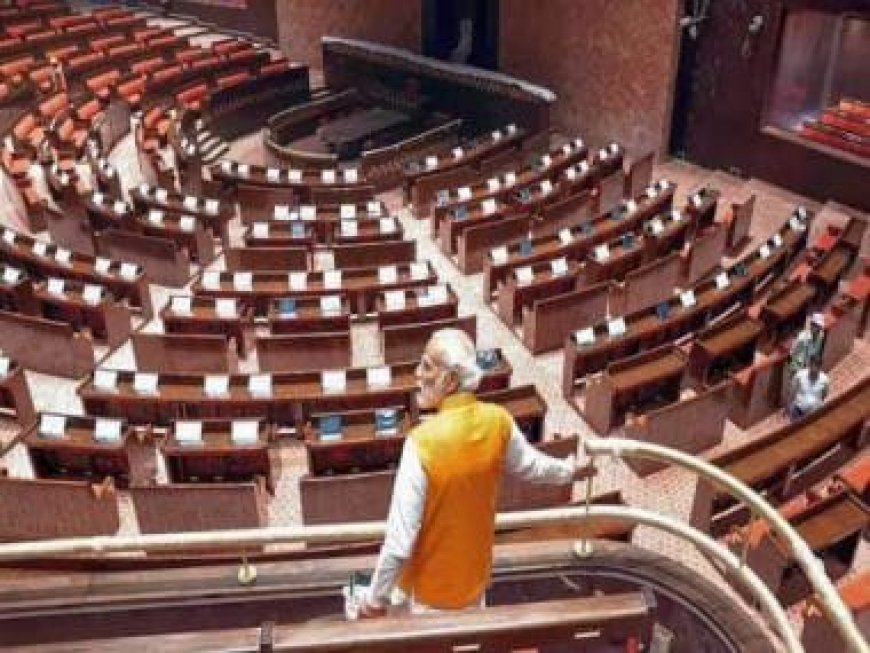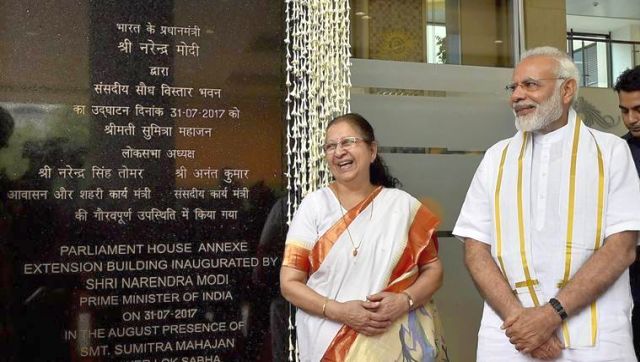Row over new Parliament: Who inaugurated Sansad buildings in the past?
Row over new Parliament: Who inaugurated Sansad buildings in the past?

The new Parliament building – four storeys high and spread across 65,000 square metres – is in the middle of a political slugfest. The inauguration of the building on 28 May has devolved into a war of words between the Opposition, namely the Congress, and the Bharatiya Janata Party (BJP).
Their grouse: Prime Minister Narendra Modi inaugurating the building on Sunday rather than President Droupadi Murmu. The parties have pointed out that according to the Constitution, the President of the country is an integral part of the Parliament and in accordance with the same, President Murmu should be inaugurating the new building.
The issue has escalated to a point where the Trinamool Congress (TMC), the Communist Party of India (CPI) and the Aam Aadmi Party (AAP) announced that they will be skipping the ceremony, with even the Congress likely to join them.
TMC’s leader in Rajya Sabha Derek O’Brien wrote on Twitter, “Parliament is not just a new building; it is an establishment with old traditions, values, precedents and rules – it is the foundation of Indian democracy. Prime Minister Modi doesn’t get that. For him, Sunday’s inauguration of the new building is all about I, ME, MYSELF. So count us out.”
Aam Aadmi Party MP Sanjay Singh too tweeted, “Not inviting President Droupadi Murmu to the inauguration of the new Parliament building is a great insult to her. This is also an insult to the tribals. The Aam Aadmi party will boycott the inauguration function in protest of Modi ji not inviting the President.”
While the government hasn’t issued a statement on the same, Union minister Hardeep Singh Puri reacting to the row, criticised the Congress saying that it was Prime Ministers Indira Gandhi and Rajiv Gandhi who inaugurated the Parliament annexe and library respectively in the past.
#WATCH | In August 1975, then PM Indira Gandhi inaugurated the Parliament Annexe, and later in 1987 PM Rajiv Gandhi inaugurated the Parliament Library. If your (Congress) head of government can inaugurate them, why can’t our head of government do the same?: Union Minister Hardeep… pic.twitter.com/syv8SXGwIS
— ANI (@ANI) May 23, 2023
Congress leader Manish Tewari hit back at Puri’s statement, alleging that the minister is trying to “obfuscate and dissimulate”.
“Minister Hardeep Singh Puri, I am afraid, is trying to obfuscate and dissimulate. There is a difference between an annexe to the Parliament, library and a new Parliament building,” he said in a tweet.
We take a look back at what are these buildings that were inaugurated and who had inaugurated them?
Parliament House Annexe
After Independence as activities at Parliament increased, a need for more space was felt by the leaders of India. According to ‘Parliament House Estate’, a document published by the Lok Sabha Secretariat, the Parliament House Annexe was built for this reason – to accommodate “Parliament Parties/Groups, Meeting Halls for Parties/Groups, Committee Rooms and Offices for the Chairpersons of Parliamentary Committees and for the Secretariats for the two Houses”.
The building was designed by J M Benjamin, chief architect of the Central Public Works Department (CPWD) and on 3 August 1970, President VV Giri laid the foundation stone for the structure. Five years later, on 24 October, Prime Minister Indira Gandhi inaugurated the building.
The building had three wings as well as a covered plaza for car parking. The front and rear blocks of the building were three-storeys high while the central block had six floors along with a terrace.
Also read: How new Parliament building is at the centre of naming row
Parliament Library
The Parliament Library is one of the finest and richest repositories in the country. On 15 August 1987, then Prime Minister Rajiv Gandhi laid the foundation stone for the new structure called Sansadiya Gyanpeeth and it was inaugurated on 7 May 2002, by then President K R Narayanan.
Spread over four floors with covered area of 60,460 square metres, the library is a centrally air conditioned building equipped with state of the art technology.

Parliament Annexe Extension Building
In 2017, Prime Minister Narendra Modi had inaugurated the Parliament House Annexe Extension Building which has committee rooms, an auditorium, a banquet hall and chambers for chairpersons of Standing Committees in the presence of then Lok Sabha Speaker Sumitra Mahajan, Deputy Speaker M Thambidurai and Parliamentary Affairs Minister Ananth Kumar.
The foundation stone of the extension building was laid in May 2009 by Vice-President M Hamid Ansari and then Lok Sabha Speaker Somnath Chatterjee. The construction work started in May 2011 and was completed in December 2016.
The building had two blocks spread across 39,495 square metres. The first block titled A was three storeys high and four committee rooms, an auditorium, a banquet hall, call-on rooms and a few office rooms. The second, Block B, was six floors high and had 41 chambers for chairpersons of Standing Committees and branches of the committees.
Constitution Speaks
As the slugfest between the two continues, here’s what the Constitution says about the role of the President.
According to the Constitution, the powers of President entail executive, legislative, judiciary, emergency, and military powers. The legislative powers included both Houses of the Parliament, that is Lok Sabha (Lower House) and Rajya Sabha (Upper House).
In Article 79 it is further stated that, “There shall be a Parliament for the Union which shall consist of the President and the two Houses – Council of States (Rajya Sabha) and the House of People (Lok Sabha).”
Article 74 (1) of the Indian Constitution specifies: “There shall be a Council of Ministers with the prime minister at the head to aid and advise the President who shall, in the exercise of his functions, act in accordance with such advice: Provided that the President may require the council of Ministers to reconsider such advice, either generally or otherwise, and the President shall act in accordance with the advice tendered after such reconsideration”.
Article 87 also states that the President must address both the Houses before every Parliament session. The bills passed by both the Houses can’t become an act without greenlight given by the President.
Thus, the Constitution gives the President a very significant role in the functioning of the Parliament.
With inputs from agencies
Read all the Latest News, Trending News, Cricket News, Bollywood News,
India News and Entertainment News here. Follow us on Facebook, Twitter and Instagram.
What's Your Reaction?



























































